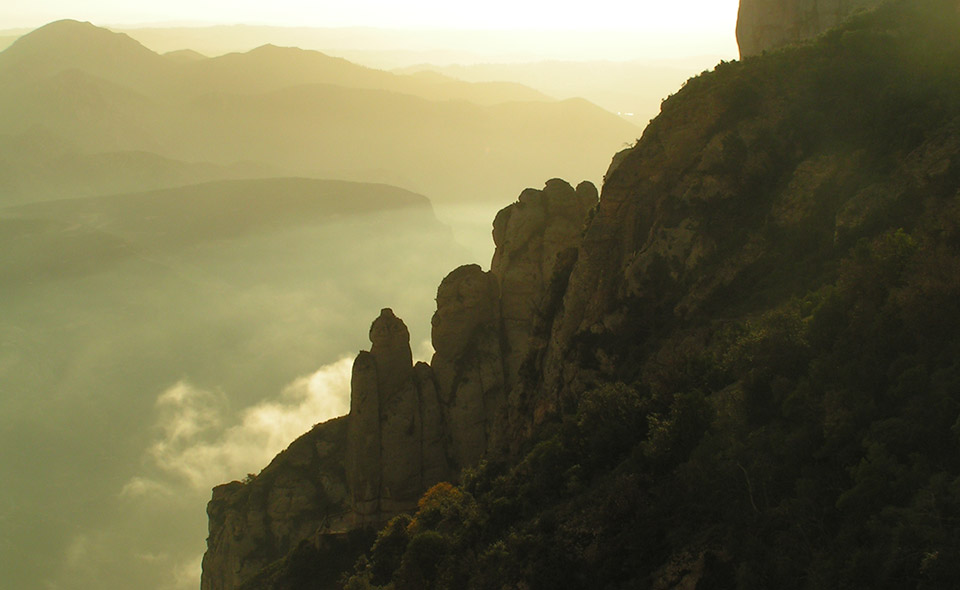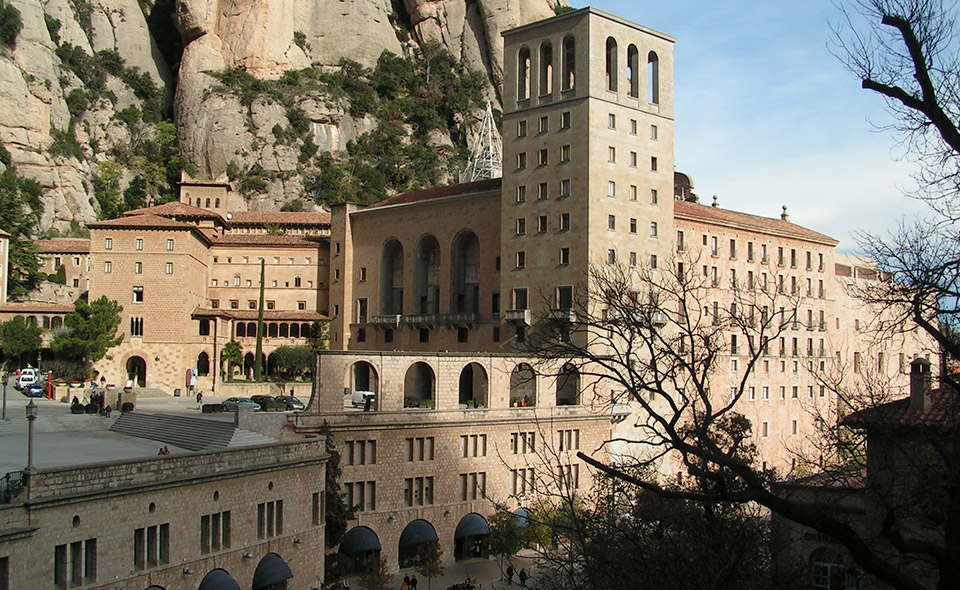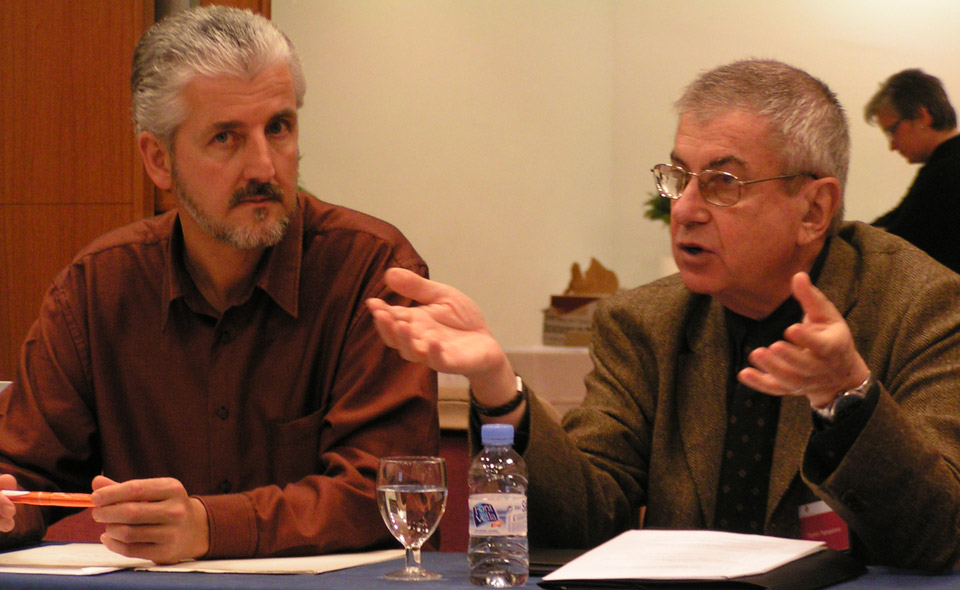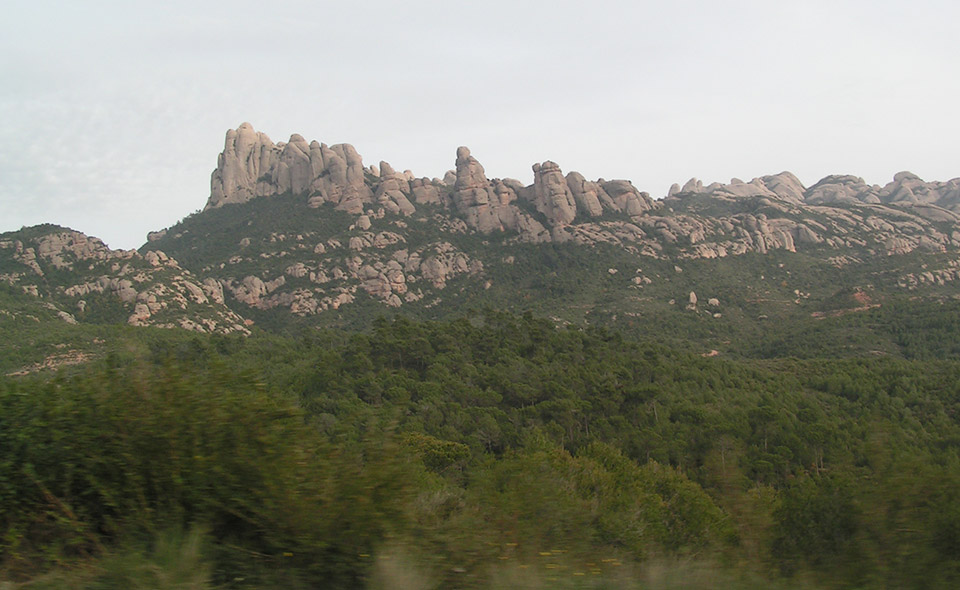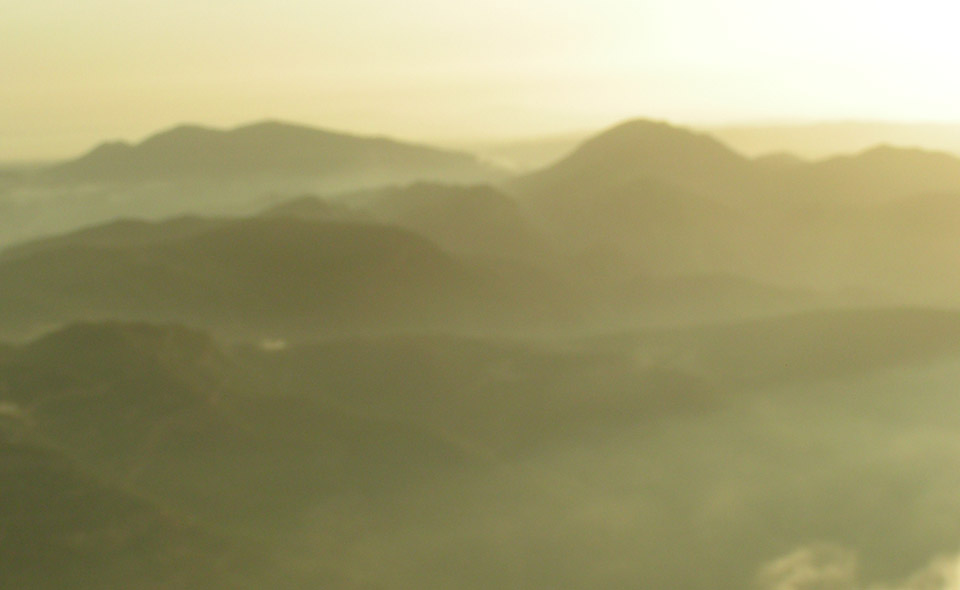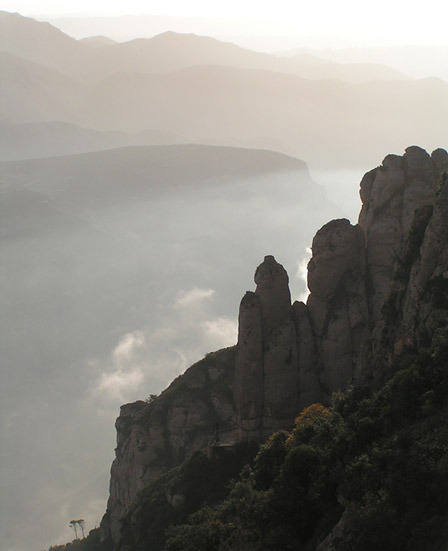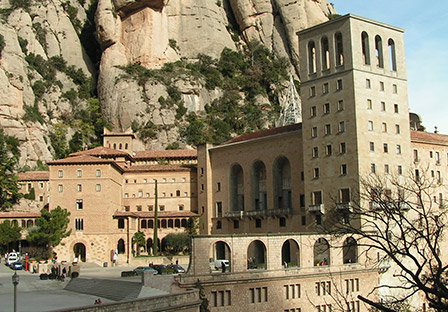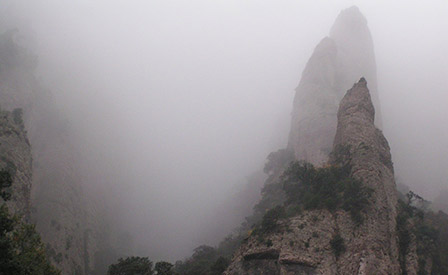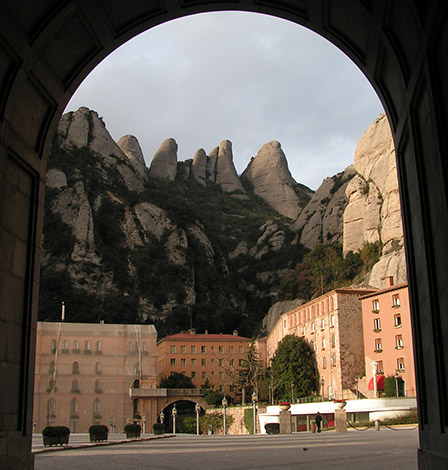Site
Baie beskou die wonderlike rock pinnacles en die kloosters op Montserrat die geestelike hart van Katalonië te wees. Geleë binne die Barcelona Metropolitan Area hulle is net 50 km van die stad in 'n beskermde gebied. Die plaaslike Benediktynse klooster gemeenskap het gesorg Montserrat omdat hulle daar gevestig in 1025. Montserat nog altyd aangetrokke bywoners maar sedert die 80's, Montserrat verwelkom toenemende aantal besoekers, beraam om in die tien van miljoene. Saam met die Raad van die beskermde gebied en plaaslike munisipaliteite, die monnike gewerk het om die unieke natuurlike te bewaar, kulturele en godsdienstige waardes van Montserrat en beskerm dit teen die bedreiging van die groeiende metropool in die omgewing.
Bedreigings
Landslides, rock falls, storms and forest fires have been a threat the local flora and fauna throughout the ages and might get worse due to the increasingly changing climate. Since the late 1800s, tourist pressure on the site has steadily increased, and visitor numbers now reach a total of 3 million per year. Out of these, sommige 2,3 million are concentrated around the monastery of Santa Maria and seriously impact on the calm and tranquillity of the monastic area. In the lower areas of the mountain, urbanisation is spreading rapidly and affecting ecological and landscape connectivity with neighbouring mountain ranges.
Visie
Stilte en nadenke moet in hierdie gerespekteerde heilige natuurlike tuiste sentrale bly, en planne vir die bestuur is gerig op die manier. Several town councils are lobbying for the increase of the surface of protected land in the form of an agricultural park in the lower regions of the mountain. These developments would help to protect the site against urban encroachment and especially also contribute to the peace and quietness in the lower olive groves.
Aksie
In 2006 the first workshop of the Delos Initiative was organized in Montserrat in cooperation between IUCN, the Park Board, the Ministry of the Environment of Catalonia and the monastic authorities. Different perspectives were exchanged with the main stakeholders plus the Catalan Federation of Hiking and Climbing Clubs, since the pinnacles and walls of Montserrat also are a highly prized climbing area. The workshop served as a starting point for the development of plans serving synergies between the different interests and values at stake at Montserrat.
Beleid en wetgewing
While efforts to declare Montserrat a national park started in 1902, the actual enactment by the Parliament of Catalonia occurred in 1989, when it was declared a Natural Park (IUCN Category V) surrounding a Nature Reserve (IUCN Category III). Around 75 % of the protected area belongs either to the monastic community or to the Catalan government. The rest of the park, mainly at lower altitudes, is private property. The whole park is included in the European Natura 2000 netwerk.
Ecology & Biodiversity
Montserrat has a surface of about 45 km² and consists mostly of Tertiary rock conglomerates and sandstones. Though most rocks are bare, some are covered with Mediterranean vegetation, while evergreen Holm oak forests are established at sites with sufficient soil. Montserrat is home to 1200 identified vascular plant taxa, 40 of which are rare or endangered, such as Erodium foetidum, Ramonda myconi en Saxifraga callosa. The site is furthermore inhabited by the vulnerable and rare Spanish Ibex (Capra hispanica) and Bonelli’s Eagle (Aquila fasciata).
Bewaarders
Die manlike Benediktynse klooster gemeenskap van Montserrat het op die berg gewoon het vir byna 'n millennium. Deur die eeue heen kluisenaars het geïsoleerde skuilings geleë in die mees afgeleë en dikwels boonste dele van die gesteente beset. A female monastic community was established in another part of the mountain about 50 jaar gelede. Both male and female monastic communities share the appreciation for the holy place and the community where they revere values such as silence and contemplation. They describe the holy mountain as having a religious and symbolic value and therefore they have always kept it open to pilgrims and other visitors. One of the monks’ constant challenges is to pass these unique values and environments on to future generations. To achieve this, they manage the public facilities and visitors’ experience of the place while adopting measures to decrease the environmental and cultural impact in vulnerable areas.
Werk saam
Hierdie park is uniek in die feit dat die raad van bestuur is wat gelei word deur die Katalaans president, terwyl die hoof abt van die klooster van Santa Maria dien as 'n vise-president. Klooster monnike stel hul gemeenskap in al die groot plaaslike groepe. Verhoudings met die vier omliggende munisipaliteite is oor die algemeen kompleks, maar positiewe. Terwyl hy in die verlede was daar konflikte op die gebruik van hulpbronne, die klooster gemeenskap betrokke is nou in 'n sinvolle dialoog met die plaaslike stadsrade wat help om die vrystelling van die druk wat kan opbou in konfliksituasies. 'N private onderneming is geskep deur die klooster gemeenskap in 1912, dien alle openbare dienste rondom die klooster te bestuur. Onlangs, die klooster ook verbonde aan die Delos-inisiatief van IUCN te verdiep en verbreed die pogings in die integrasie van die ontasbare erfenis in natuurbewaring.
Bewaring gereedskap
By managing natural resources prudently and in an effective way, the monastic community has long maintained a high natural value in Montserrat. They recently deployed new tools and approaches to protect the surrounding nature. The Park Board now supports local municipalities in resisting urban growth and pressures. The strategic establishment of walking paths draws public attention away from hermitages that are still in use for spiritual retreats and protects others from vandalism.
Resultate
The close collaboration with surrounding municipalities has led to the declaration of the site as a Natural park (35 km²) and Nature Reserve (17 km²) plus a buffer zone of about 42 km²: an important first result in the resistance to urban overgrowth at the site. The monastic community maintains a strong position in the Park board.
The first workshop of the Delos Initiative in 2006 has resulted in an interesting book, published by the Montserrat publishing house, containing a Declaration summarising the main conclusions, and also valuable and widely accessible information on conservation measures for Montserrat as well as for several other sacred natural sites of technologically developed countries.
- Mallarach JM and Papayannis T (eds.). 2006. Beskermde gebiede en Spiritualiteit. Proceedings of the first Workshop of the Delos Initiative – Montserrat. IUCN and PAM publications. Montserrat.
- Delos Initiative: www.med-ina.org/delos/

